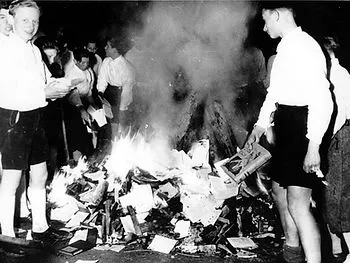The title of this essay takes inspiration from the German concept Vergangenheitsbewältigung, meaning “coming to terms with the past.” After the Second World War, Germany embarked on a long and difficult journey of reckoning with the atrocities of the Nazi era. This process required acknowledging the roles played not only by those in power but by ordinary citizens who were complicit in the regime’s crimes. Scholars argue that such engagement was critical for rebuilding German society and laying the foundations of a functioning democracy. This example demonstrates the enduring need to address historical injustices, not only to ensure accountability but to support the creation of a more inclusive and equitable society.

Engaging with the past, however, should not remain trapped in cycles of accusation or defensiveness. Instead, history must be approached as a discipline grounded in the analysis of cultural, social, and political dynamics. Understanding how historical forces interact allows us to interpret the present with greater clarity.
A former professor once remarked that historical conversation is essential to social progress. Political leaders have frequently used history to validate their authority—either by distorting facts or appropriating narratives. The former idealizes a mythical past to justify present policies, while the latter reinterprets historical figures and events to serve contemporary agendas. In both strategies, the past is manipulated to meet the needs of the moment.
This raises a critical question: can history truly be erased?
Attempts to suppress or remove historical knowledge are efforts to deny lived reality. These actions do not eliminate the past but seek to obscure its relevance. Eric Hobsbawm, in the prologue to The Age of Empire, writes about the “no man’s zone” in history—spaces that no longer hold physical traces of what once existed. Historians, when confronted with such voids, are compelled to ask: what was here before? This question transcends factual recovery. It represents a deeply human effort to reclaim memory and identity.
Although efforts to marginalize or bury history may succeed in limiting public discourse, total erasure is rarely achievable. History finds expression in fiction, oral traditions, visual art, and even absence. Regimes that rely on erasure as a political tool often see that strategy unravel in later decades, as renewed scholarship and public awareness bring buried truths back into focus.
Debates surrounding history education reflect this phenomenon. From the earlier exclusion of A.K. Ramanujan’s essay on the Ramayana to the recent removal of chapters on the Mughals from Grade 12 textbooks by the NCERT, the struggle over historical narrative remains ongoing. A colleague once observed that major historical bodies in India—including the Archaeological Survey of India and the Indian Council of Historical Research—have not consistently followed meritocratic principles. Leadership in such institutions often lacks adequate historical training, which results in frequent and politically motivated changes to educational content.
Beyond curriculum changes, there exists a broader pattern of historical homogenization. Since independence, policies have promoted a singular cultural identity, often at the expense of regional languages, customs, and oral histories. This process has contributed to the erosion of indigenous identities. When history is distorted or repressed, essential lessons are lost, injustices go unacknowledged, and a flawed version of the past begins to shape the public’s understanding of the present.
The Role of Dialogue in Resisting Historical Distortion
Confronting deliberate historical manipulation requires sustained public discourse. Resistance plays a central role in challenging official narratives and in preserving the complexity of historical memory. Global examples highlight the importance of this struggle. Turkish leadership continues to deny the Armenian Genocide, despite growing international recognition. In Australia, efforts to foreground Australia Day and ANZAC Day have sparked debate over the marginalization of Aboriginal histories. These cases illustrate how official narratives often prioritize national pride over honest engagement with the past.
Persistent dialogue remains the most effective response to these distortions. Such conversations allow for a broader, more nuanced understanding of historical events and experiences. They serve as a check against simplistic narratives and ensure that future generations are not denied access to a fuller, more accurate account of history.
Conclusion
History is not meant to glorify or condemn in absolute terms. Its purpose lies in understanding complexity, contradiction, and change. Reckoning with the past involves more than acknowledging past wrongs—it requires recognizing how they continue to shape the present. It means listening to marginalized voices, confronting uncomfortable truths, and resisting efforts to simplify or sanitize historical memory.
The pursuit of historical understanding must remain grounded in evidence and method. Without rigorous inquiry, historical practice risks descending into myth-making and ideological projection. Emotion has its place, but must not overwhelm the critical faculties that form the core of historical analysis.
A more reflective approach to history challenges narrow interpretations and fosters greater awareness of the forces that shape human societies. It allows us to move beyond nostalgia and denial, offering instead a path toward reconciliation and a deeper understanding of our collective experience.
